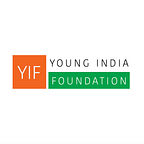Ishqamev Jayate: How Young India is Battling Homophobia
A Think Article by Molina Singh
Echoes of triumph transcending throughout the land. Closets abandoned unabashedly in victory. A nation draped in glistening rainbows.
A remarkable feat, 6 September 2018 has been etched in the world’s memory as a day India was out and proud. While it took herculean steps to reach the unanimous decision of the apex court that finally decriminalized same-sex relations, we must not forget that it started with a humble petition by students of the Indian Institute of Technology (IIT), further strengthening their institutions and beliefs, that later went on to receive widespread support from celebrities and activists. This is one of the many actions taken up by the Indian youth to fight the discrimination against the LGBTQIA+ community that seems to have entrenched itself in the Indian society. Homosexuality may have been decriminalized legally, but the cultural prejudices and associated taboos are still complexly deep-rooted in the minds of the people.
Recently, in a major blow to the Transgender community, the Trans Bill 2019 was passed by the Parliament which sprouted extensive backlash from young Indians. Protests unfurled against the Bill that, in principle, sought to protect the community but was actually violating their rights through a plethora of regressive policy measures, such as comparatively weaker sentences for crimes against transgender individuals and mandating sex-reassignment surgery in order to legally transition. Colleges joined hands with youth-led queer collectives to express their solidarity. Coinciding with the Citizenship Amendment Act that had already provoked anguish among young people, such a mandate added fuel to the fire and tipped off their dissent against unlawful activities.
Another endeavour working for gender equality is PinkList India, commenced with the aim of providing information about candidates supporting LGBTQIA+ rights in the Lok Sabha, it has spread its wings even farther and wider. Currently, the initiative is working towards providing relief to queer individuals facing a host of challenges, personal and social, due to the Coronavirus pandemic. Their initiatives also include highlighting MP’s comments and accountability on LGBTQIA+ rights, most recently evident through their State of the QUnion project.
For they believe, as they put it, “our fight does not end after 377.”
Shattering embedded beliefs is another venture — ‘Breaking Barriers’ — India’s first Gay-Straight Alliance at the high school level. The initiative traces its roots back to Tagore International School, where founder Shivanee Sen mobilized students to be better aware of queer rights, issues and grassroot activism. The campaign garnered media attention globally and went on to get recognized by the GELF. Such an unprecedented initiative is a breath of fresh air for many queer school students who hesitate to embrace their gender identities among cis-het classmates.
Finally, what perfectly encapsulates the essence of being queer in India are the annual pride parades. Every year, a plethora of queer and straight individuals come together to celebrate equal and free love on the streets, carrying magnificent symbols of pride and unflinchingly embracing their identities. As is always the case, these parades receive an overwhelming support from young people who exuberantly showcase their support for human rights. Loud cheers of fiery chants, swaying of beautiful rainbows, and showers of complete, unadulterated love light up the celebrations, for they are symbols of freedom, of liberation, of a revolution. They show us that no matter how many differences or biases exist in the society, in the end, love always prevails.
“When your oppressors demand silence and misery, joy is resistance.”
The fight against ingrained heteronormativity still seems everlasting for the nation. But every time an individual speaks up against homophobia, a victory lands in the hands of love. These acts by young citizens do highlight that hope glimmers in the distance. It is up to us to carry forward the mission so that each individual can fully enjoy a free, fearless, and honest life as was dreamt by the founding fathers of the world’s largest democracy. In Johann Goethe’s words, “I am what I am so take me as I am.”
Editor’s note: This article by no means claims that the state of homophobia and stigma in the nation is either solved or placid — discrimination and prejudice against members of the LGBTQIA+ community is still extremely entrenched systematically, socially, and culturally. What the article aims to highlight and appreciate is the role young people have played in changing that, and how some definitive strides have been made. We over here at Young India Foundation would like to wish you all a happy, safe, and healthy Pride Month.
The objective of a ‘Think Article’ is to bring knowledge about policies in the sphere, in context to the youth of India and, if possible, influencing the policy process. The article has no motivation to pass any political judgments.
Bibliography
- Biswas, Shreya. “Faces behind the Fight against Section 377 in Court.” India Today, 7 Sept. 2018, www.indiatoday.in/india/story/faces-behind-the-fight-against-section-377-in-court-1333406-2018-09-06.
- “The Modi Govt’s Handling of the Trans Rights Bill Is Transphobia in Action.” The Wire, thewire.in/lgbtqia/trans-rights-bill. https://www.pinklistindia.com/
- “Breaking Barriers: India’s First GSA.” GLSEN, www.glsen.org/blog/breaking-barriers-indias-first-gsa.
